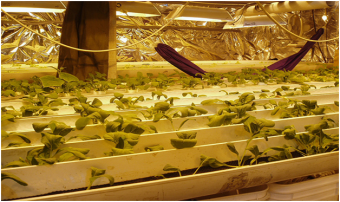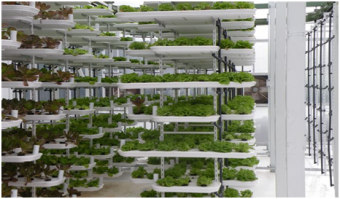Globally, attention was drawn to the problem of post harvesting food losses. Post harvest food loss is one of the largest contributing factors to food insecurity in the world. The poor countries deal with reducing the tragic waste of losses after harvest from lack of storage, transportation and pest control. Losses of fruits and vegetable can be higher during the post harvest period. It depends upon the weather, storage and market distance. For a higher profit of growers and marketers to improve the post harvest knowledge often results in reducing food losses.
For improving the losses of fruits and vegetable the main objective is to maintain the quality, flavor, nutritive value, to protect food safety and to reduce losses between harvest and consumption. Small production farmer has the option to harvest earlier, when vegetable are more delicate, or harvest later, when fruits are at a more flavorful stage. The multiple harvests are an option that lead to higher profit due to the higher value of the product.
Lack of access to technology, use of improper drying methods and poor postharvest technique is the main reason for the losses the food. Post-harvest management practices that reduce product loss to spoilage will reduce bacillus risks. Cleaning the product, Sorting, packaging, quick cooling, Good refrigerator storage, Good transportation & distribution these are the key to reduce the losses of foods.
Although the biological and environmental factor that contributes to post harvest losses are well understood and many technologies like Reflectometer, firmness tester, Harvesting containers etc have been developed to reduce the post harvesting losses. Farmer training is one of the solutions to reduce the losses of foods, there are so many tools like nut wizard, Ames fruit picker, yoke, leveler etc available in the market, but they often lack the training to properly use those tools and inputs. Post harvest biotechnology has played an important role to improve the food quality and reduce the losses.

The cost of the food is directly affected by the care taken during harvesting and field handling. Most important thing is crop selection and timing to meet expected market requirement. Produce must be transported as a fresh handling, whether from the field to temporary storage, from the temporary storage to packinghouse, from the packing house to market, or to various destination markets. Travel during cooling hours (late night or early morning) to reduce the heat load on a vehicle, Refrigerator transport is highly recommended for the long destination.
In the simplest packinghouse, produce is delivered in picking container, forthwith after harvest, directly to the packers. Every employee should be knowledgeable regarding produce size, grade and defects and packing method. As the size and complexes of the packinghouse increase, a lot of operation and workers trained in a particular task like sorting and selection, waxing, sizing, grading, parallelizing etc are required.
Successful post harvest handling depends part on the initial quality of the crop at harvest, as well as the degree of maturity. It conjointly depends on careful handling to attenuate mechanical harm, correct management of the environmental conditions, and smart sanitation. Proper post harvest system practices will therefore lead to reduction of food losses with good quality and high growth.
Source - Seedbuzz










